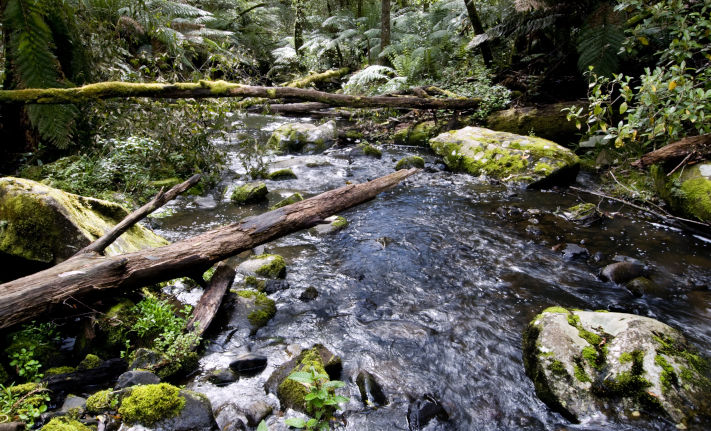What is Environmental Water?
Environmental flow regime is the timing, frequency, duration, and magnitude of flows for the environment. Environmental flow is the streamflow required to maintain appropriate environmental conditions in a waterway.
Streamflow in Victoria’s waterways are naturally very variable. Our river life is naturally adapted to this variability and relies upon it. Whether it is high flows over winter, freshes in summer, or letting floodplains dry out at the right time, each part of the natural flow regime creates different physical or biological conditions that support our plants and animals, to eat, breathe, migrate, spawn or take refuge.
River regulation and water use has removed much of this variability, and with it, the cues or conditions to support river life.
Environmental water is managed to put back critical elements of streamflow variability. Measuring streamflow continuously, and elements of water quality like dissolved oxygen, turbidity and salinity help us plan and prioritise how we use environmental water to get the best outcomes possible. It is also opportunity to check in on whether environmental flows have been achieved and are meeting their objectives.
How streamflow and water quality monitoring supports environmental water
Victorian Environmental Water Holder (VEWH), Catchment Management Authority (CMA) partners, and river operators set up monitoring via the Regional Water Monitoring Partnership (RWMP) to actively manage environmental water.
Our streamflow network is used in each step of the process to:
- Understand what natural flow conditions looks like for each of our rivers and how the regime has changed
- To set requirements for the magnitude, timing, duration and seasonality of flows that would support the local ecosystems to live
- Monitoring conditions and planning for delivery of water over the year and future years to protect as many ecosystems as possible
- Triggering and managing operational releases from storages for the environment
- Sustain and top up base flows to connect habitat and prevent stagnant conditions in perennial systems
- Assessing the extent to which environmental water requirements have been delivered by natural flows and or contribution of environmental water.
Checking to ensure environmental water requirements are met
To understand if the streamflow conditions needed to sustain river life have been met, a range of compliance points are used from our monitoring network and Melbourne Water sites.
The VEWH uses data from the Water Measurement Information System (WMIS) to assess the degree to which annual watering actions have been achieved.
They use direct measures of stream flow and environmental water use to determine the extent to which the prescribed magnitude, duration, timing and frequency of each required watering action is met and combines those results to produce an achievement score for each action. This approach can be consistently applied across systems and year to year to help plan for and prioritise trade and use of environmental water across the state.
Responding to poor conditions to protect the environment
Seeing conditions emerge in advance or monitoring in real-time gives some opportunities to respond with environmental water, our monitoring network is used for active management. Our partners, Environmental water managers at our CMAs together with VEWH set water quality triggers for some systems to trigger watering actions- e.g. low dissolved oxygen and flow, high electrical conductivity and flow. Examples of responding with environmental watering include:
- Sending down flows if they see conditions becoming stagnant in key refuge pools, triggered by levels in salinity or oxygen
- Preventing release of highly saline water into the waterway or putting down diluting flows to minimise their impact.
Reviewed 29 July 2024

